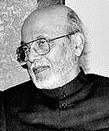
By the 19th century, the gap between Europe and the Muslim world in science and technology had become insurmountable. While Europe produced scientific luminaries like Newton, Galileo, and Darwin, the Muslim world struggled to modernize. Efforts to establish Western-style educational institutions, such as Syed Ahmed Khan’s Aligarh Muslim University in India, marked the beginning of a gradual shift, but the damage had been done
A Comment on Shikwa and Jawab e Shikwa of Allama Iqbal – Part 4 of 6
By Dr Nazeer Ahmed
Concord, CA

“Jin Ko Aata NaheeN Dunya MaiN Koyi Fun, Tum Ho”
If there be a people who are bereft of technology, it is you– Jawab e Shikwa
The initial success of the Islamic Golden Age was partly due to the synthesis of Greek philosophy with Islamic thought, most notably during the Mu’tazalite movement.
The Mu’tazalites embraced rationalism and believed in harmonizing reason with religious beliefs. However, they did not understand the limits of their philosophical methods. Philosophy is deductive; it depends on assumptions, theses, notions of before and after, subject and object. It assumes a linear flow of time. If the assumptions are incorrect, then the deductions are also incorrect. For instance, we know now that time is not necessarily linear; it can “bend” by gravity. There is clock time, relative time, perceived time, “timeless time” when “time” as we know it did not even exist. Indeed, time may not even be “real”. As opposed to the philosophical, deductive. “top-down” approach, the scientific approach is inductive, evidence based, “bottoms up”. In the inductive, evidence-based approach, philosophy, reason and logic become useful tools in the continuous search for truth, to be used, as appropriate, within their limits. The approach of the Qur’an is inductive, evidence based. The Qur’an repeatedly draws attention to the enchanting panorama of nature, the sublime mysteries of the heart, soul and the spirit as well as the majesty of human struggle in history as irrefutable signs for belief in God and an unceasing struggle to find the truth.
The Mu’tazalites fell flat on their face when they applied reason to revelation. Revelation is not time-bound. It is not space-time that “contains” the spirit, it is the spirit that surrounds space-time inside and out. The Mu’tazalite ideas faced severe opposition, particularly when they proposed that the Qur'an was "created" and not co-eternal with God, sparking religious controversies. The backlash culminated in the decline of the Mu’tazalite influence and the rise of orthodox scholars like Imam Ahmed ibn Hanbal, who emphasized strict adherence to traditional interpretations of Islamic doctrines.
One of the most significant figures in this intellectual struggle was Al-Gazzali, who argued in Tahafut al-Falasafa ("The Incoherence of the Philosophers") that reason was insufficient to comprehend the divine will. He posited that natural events occur not through cause and effect but as manifestations of God’s will. Although Al-Gazzali's intent was not to oppose philosophy and science per se, his critique of philosophers like Ibn Sina had a chilling effect on scientific inquiry. Ibn Rushd (Averroes) attempted to revive rationalist philosophy, asserting that reason and faith were compatible. However, his ideas failed to gain widespread acceptance in the Muslim world, although they greatly influenced European thinkers like Thomas Aquinas.
Political and military events also had a profound impact on the development of science and technology in the Muslim world. The Mongol invasions of the 13th century were catastrophic for the Muslims. Cities like Baghdad, Nishapur, and Samarkand—once centers of learning and culture—were destroyed. The invaders demolished libraries, killed scholars, and decimated the intellectual infrastructure that had supported scientific inquiry. Simultaneously, the Crusader onslaughts resulted in the loss of Muslim Spain where cities like Córdoba had been major centers of knowledge. The collapse of these cultural and intellectual hubs marked the end of the Islamic Golden Age.
The emergence of spiritual and mystical Islam, especially Sufism, helped the Muslim world cope with the trauma of these invasions. However, this shift led to a decline in the emphasis on empirical sciences. The Ottoman, Safavid, and Mughal Empires, which rose in the aftermath of the Mongol devastation, invested heavily in art, architecture, and military technology but largely neglected scientific inquiry. Artisanship and engineering thrived, with advancements in architecture and metallurgy, but these innovations were not based on systematic scientific research. For example, the Mysore rockets used by Tippu Sultan against the British were technologically advanced but lacked a theoretical understanding based on Newtonian physics.
The delay in adopting critical technologies like the printing press significantly contributed to the scientific stagnation in the Muslim world. While the printing press revolutionized knowledge dissemination in Europe, leading to the Renaissance and the Enlightenment, it faced resistance in the Muslim world. Religious leaders feared that the press would desecrate the Qur'an, and it was not until the 18th century that the Ottomans adopted this technology. This resistance hindered the widespread distribution of knowledge and limited intellectual progress. By contrast, the printing press had become ubiquitous in Europe by the 16th century, driving an explosion of scientific and philosophical inquiry.
Another area of neglect was naval technology. After the Ottoman defeat at the Battle of Lepanto in 1571, Muslim naval power declined steadily. While Europe invested heavily in maritime exploration, discovering new trade routes and expanding its global influence, the Muslim empires failed to keep up. The Ottoman Empire's neglect of naval science and the Mughal Empire's focus on land-based power left the Islamic world vulnerable to European colonization and economic decline.
Sectarianism and extremism played a significant role in weakening the Muslim world. The Sunni-Shia divide, exemplified by the Safavid-Ottoman rivalry, created persistent political and military conflicts. The rise of Salafism and Wahhabism in the 18th and 19th centuries further polarized the Islamic world.
The internal weakness of the Muslim body politic and the technological backwardness invited external intervention and colonialism. The colonizers dismantled traditional educational systems, replacing them with schools designed to train administrators rather than scientists. The British colonization of India, for example, disrupted centuries of intellectual traditions and imposed an education system focused on producing clerks and bureaucrats. The Ottoman Empire's attempts to modernize through the Tanzeemat reforms were too little, too late, and the empire eventually disintegrated after World War I.
By the 19th century, the gap between Europe and the Muslim world in science and technology had become insurmountable. While Europe produced scientific luminaries like Newton, Galileo, and Darwin, the Muslim world struggled to modernize. Efforts to establish Western-style educational institutions, such as Syed Ahmed Khan’s Aligarh Muslim University in India, marked the beginning of a gradual shift, but the damage had been done. (Continued next week)
(The author is Director, World Organization for Resource Development and Education, Washington, DC; Director, American Institute of Islamic History and Culture, CA; Member, State Knowledge Commission, Bangalore; and Chairman, Delixus Group)

